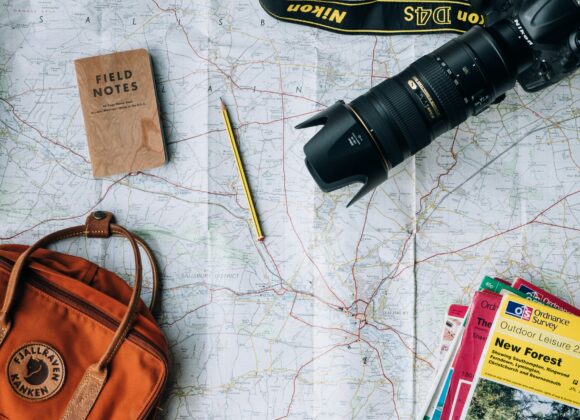Traveling to Paris and Italy is a dream for many. Whether you’re drawn to the romantic boulevards of Paris or the sun-drenched piazzas of Rome, packing smartly can make or break your experience. With different climates, cultural expectations, and activities, knowing what to bring is essential. This comprehensive 10-step packing guide will help you prepare for your journey with confidence, style, and practicality.
From deciding what to pack when traveling to Italy to curating the perfect packing list for Paris France, this guide blends fashion, function, and travel wisdom into one seamless plan.
✈️ Step 1: Understand Your Itinerary and Seasons
Before you even unzip your suitcase, take a moment to study your itinerary. Are you planning to visit museums, hike the Amalfi Coast, dine at Michelin-star restaurants, or explore vineyards in Tuscany? Your activities will determine what you need.
Also, consider the season. Paris and northern Italy can be chilly and rainy in spring and fall, while southern Italy is warm and sunny most of the year. Summer months (June–August) are hot and crowded, while winter (December–February) is cold but magical with fewer tourists.
Tip: Check the weather forecast for each city on your route a week before departure.
👗 Step 2: Build a Capsule Wardrobe
Europeans are known for their chic, minimalist fashion. You don’t need to pack your entire closet—just a few versatile pieces that can be mixed and matched.
For Paris:
- Neutral-toned tops (white, beige, black)
- Slim-fit jeans or trousers
- A stylish blazer or trench coat
- A classic dress for evenings
- A scarf (Parisians love scarves!)
For Italy:
- Linen shirts and flowy dresses for warmer regions
- Comfortable shorts or skirts
- A lightweight cardigan for layering
- A swimsuit for coastal areas
Stick to a color palette so everything works together. This makes dressing easier and keeps your luggage light.
👟 Step 3: Prioritize Footwear
Walking is a huge part of any European trip. Cobblestone streets, metro stations, and long museum tours demand comfortable shoes.
Recommended Footwear:
- Stylish sneakers (for daily walking)
- Comfortable sandals (for warm days)
- Dressy flats or loafers (for dinners or shows)
- Optional: hiking shoes (if you’re exploring nature)
Avoid heels unless you’re attending a formal event. They’re impractical on uneven streets and can quickly become a burden.
🧥 Step 4: Layer for Versatility
Weather in Paris and Italy can be unpredictable. Even in summer, evenings may be cool, and sudden rain showers are common.
Layering Essentials:
- A light rain jacket or windbreaker
- A warm sweater or pullover
- A pashmina or shawl (great for warmth and style)
- A compact umbrella
Layering allows you to adapt to changing temperatures without overpacking. It’s also helpful for transitioning from daytime sightseeing to evening dining.
👜 Step 5: Pack Smart Accessories
Accessories are the secret weapon of savvy travelers. They elevate your look and serve practical purposes.
Must-Have Accessories:
- Sunglasses
- Crossbody bag (preferably anti-theft)
- Reusable water bottle
- Travel-size umbrella
- Hat or cap (for sun protection)
For Paris, a chic beret or scarf adds flair. In Italy, a wide-brimmed hat is perfect for sunny days in the countryside or coastal towns.
🧼 Step 6: Toiletries and Personal Care
While you can buy most toiletries abroad, it’s wise to bring your favorites—especially if you have sensitive skin or specific preferences.
Toiletry Checklist:
- Travel-size shampoo, conditioner, and body wash
- Toothbrush, toothpaste, floss
- Sunscreen and lip balm
- Razor and shaving cream
- Deodorant
- Feminine hygiene products
- Prescription medications (with a copy of your prescription)
Pack these in a clear, zippered pouch to comply with airport security regulations. Consider solid toiletries to save space and avoid leaks.
📱 Step 7: Tech and Travel Gear
Technology can enhance your travel experience—if you pack wisely.
Essential Tech Items:
- Universal power adapter (Europe uses different plugs)
- Portable charger/power bank
- Smartphone with offline maps and translation apps
- Lightweight camera (optional)
- Noise-canceling headphones
- E-reader or tablet (for long train rides)
Don’t forget chargers and cables. Use a tech organizer to keep everything tidy and accessible.
📄 Step 8: Organize Important Documents
Your travel documents are your lifeline abroad. Keep them safe, organized, and easily accessible.
Document Checklist:
- Passport (with at least 6 months validity)
- Visa (if required)
- Travel insurance documents
- Copies of hotel bookings and flight tickets
- Emergency contacts
- Credit/debit cards (notify your bank before travel)
- Local currency (Euros for both France and Italy)
Use a travel wallet or document organizer. Consider digital backups stored securely in your email or cloud.
🧦 Step 9: Pack Light but Thoroughly
Packing light doesn’t mean sacrificing essentials. Use packing cubes to organize your suitcase and maximize space.
Sample Packing List for Paris France and Italy:
- 4–5 tops
- 2–3 bottoms
- 1–2 dresses or jumpsuits
- 1 light jacket
- 1 sweater
- 1 swimsuit
- 1 sleepwear
- 5–7 pairs of underwear
- 3–4 pairs of socks
- 1 pair of walking shoes
- 1 pair of sandals
- Toiletries
- Accessories
- Tech gear
- Documents
Roll clothes to save space and reduce wrinkles. Leave room for souvenirs and shopping finds.
🧳 Step 10: Prepare for the Unexpected
Even the best-laid plans can go awry. Prepare for minor hiccups with a few extra items.
Emergency Kit:
- Basic first aid supplies (band-aids, pain relievers)
- Travel-size laundry detergent
- Sewing kit
- Ziplock bags (for wet clothes or snacks)
- Snacks (nuts, granola bars)
- Copies of important documents
Also, consider downloading travel apps for transportation, translation, and local recommendations. Apps like Citymapper, Google Translate, and TripIt can be lifesavers.
🗺️ Bonus Tips for a Smooth Journey
1. Pack for Culture, Not Just Climate
In Paris, fashion is subtle and elegant. Avoid loud logos or overly casual outfits. In Italy, especially in churches, modest clothing is appreciated—cover shoulders and knees.
2. Laundry Access
If your trip is longer than 10 days, plan to do laundry. Many hotels offer services, or you can use laundromats. This lets you pack fewer clothes.
3. Travel Insurance
Don’t skip this. It covers medical emergencies, lost luggage, and trip cancellations. Choose a plan that includes international coverage.
4. Language Basics
Learn a few phrases in French and Italian. Locals appreciate the effort, and it can help in emergencies.
5. Stay Hydrated and Rested
Jet lag and dehydration can ruin your first few days. Drink water, avoid alcohol on flights, and try to adjust to local time quickly.
🧭 Final Thoughts
Packing for a trip to Paris and Italy is more than just folding clothes—it’s about preparing for an unforgettable experience. With this 10-step guide, you’ll be ready to explore the art, cuisine, fashion, and history of two of Europe’s most iconic destinations.




